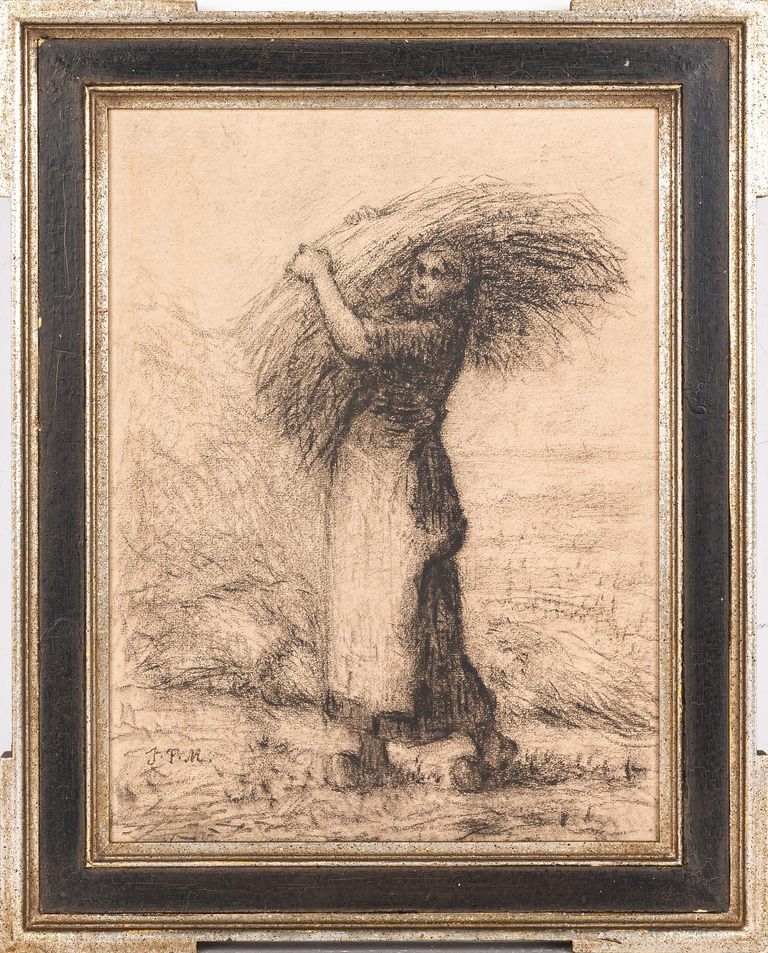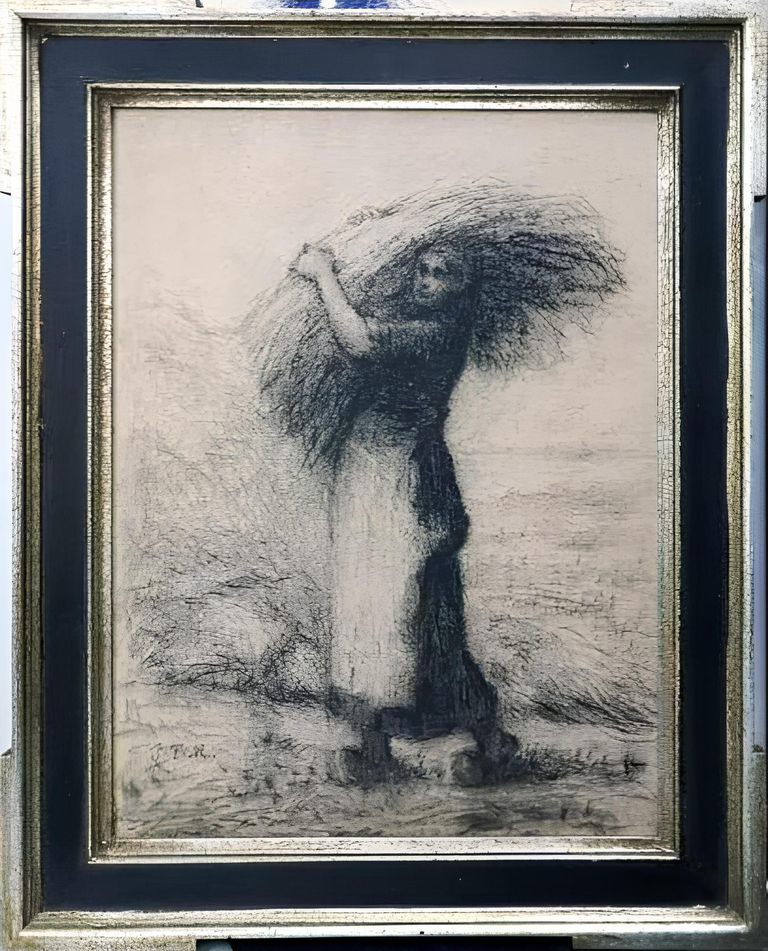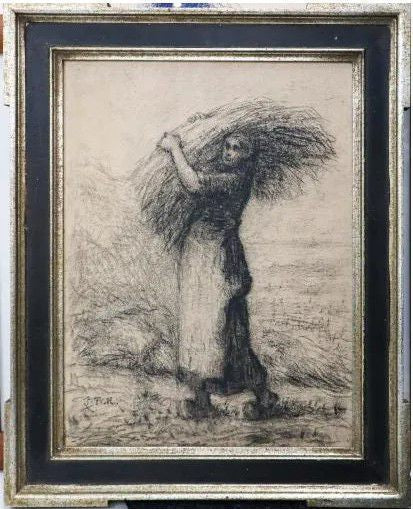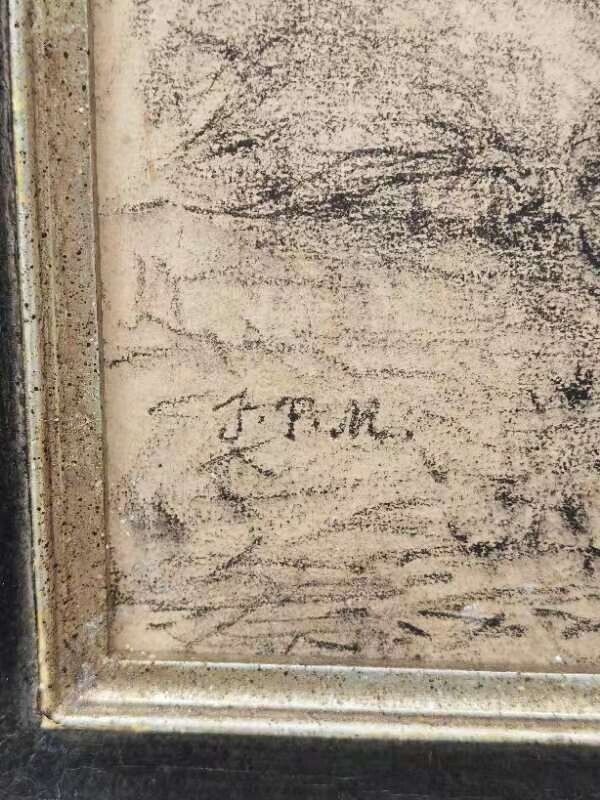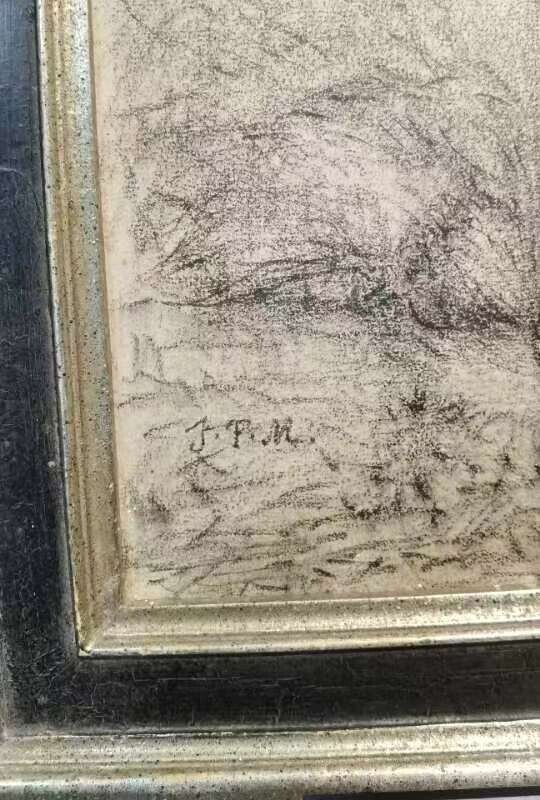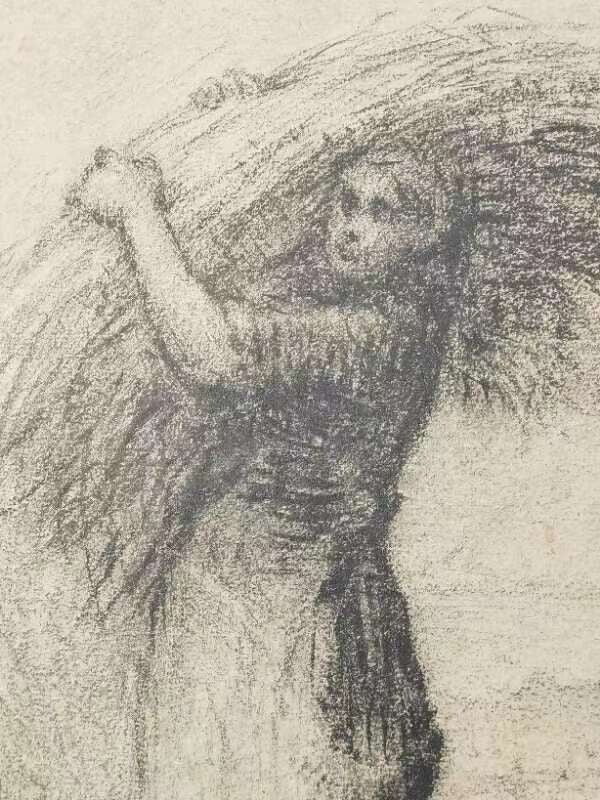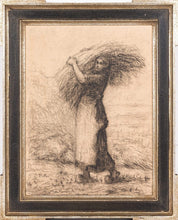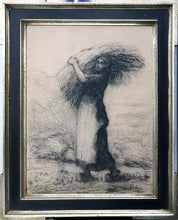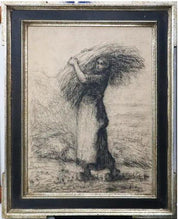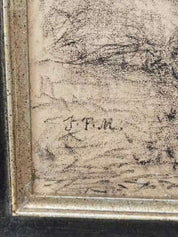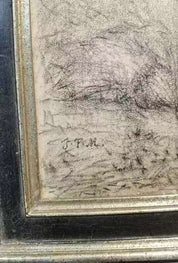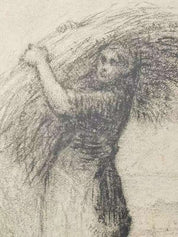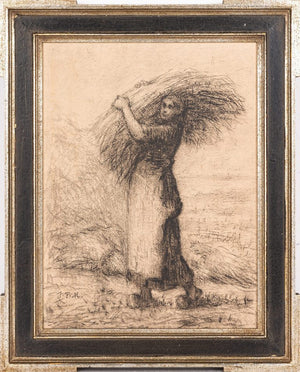Similar Items
Jean-Francois Millet (After) - Woman Carrying Wheat
Jean-François Millet
Artwork Details
Artist:
Jean-François Millet
Dimensions:
15.5in. by 11.25in.
Medium:
Lithography
Artwork Description
ean-François Millet (After) - Woman Carrying Wheat, 1873Artist: Jean-Francois Millet (After)
Title: Woman Carrying Wheat
Year: 1873
Dimensions: 15.5in. by 11.25in.
Edition: From the rare limited edition
Medium: Original Lithograph on paper
Condition: Excellent
Signature Details: Initialed in print lower left
Notes: Engraved by Laguillermie
Jean-François Millet's "Woman Carrying Wheat." This original lithograph on paper captures the essence of rural life with its depiction of a woman gracefully carrying a bundle of wheat. Created in 1873, this artwork showcases Millet's mastery in portraying the dignity and strength of laborers in the countryside.
The dimensions of this piece are 15.5 inches by 11.25 inches (39.4 cm by 28.6 cm), making it a compact and captivating work of art. This particular print is from a rare limited edition, adding to its value and desirability among collectors. It is in excellent condition, and the artist's initials are subtly incorporated into the print, located in the lower left corner.
Notably, the engraving for this lithograph was done by Laguillermie, a skilled artist who brought Millet's vision to life. Laguillermie's precise craftsmanship ensures that every delicate detail of the original artwork is faithfully captured in this print.
Jean-François Millet, born into a peasant family in Gruchy, Normandy, in 1814, rose to prominence as one of the leading figures of the Barbizon school. His deep connection to the rural landscape and the lives of the working class is evident in his body of work. Millet's artistic journey was marked by early studies with notable artists such as Paul Dumouchel and Lucien-Théophile Langlois. In 1840, his first painting was accepted at the Salon, setting the stage for his artistic career.
Millet's work received both praise and criticism, but it was his authentic portrayal of peasant life and his ability to capture the beauty in ordinary scenes that resonated with audiences. He became known for his iconic paintings, including "The Gleaners" and "The Angelus," which showcased his keen observation of rural life and his profound empathy for the working class.
Over the years, Millet's reputation grew, and his artwork influenced and inspired many artists, including Vincent van Gogh and Claude Monet. His legacy as an important figure in art history continues to endure.
This original lithograph of "Woman Carrying Wheat" allows you to own a piece of Millet's artistic legacy. Its excellent condition, limited edition status, and intimate dimensions make it a cherished addition to any art collection. Experience the timeless beauty and profound meaning of Millet's work with this exquisite print.
Jean-Francois Millet was the first child of Jean-Louis-Nicolas and Aimee-Henriette-Adelaide Henry Millet, members of the peasant community in the village of Gruchy, in Greville-Hague (Normandy). Under the guidance of two village priests, Millet acquired a knowledge of Latin and modern authors, before being sent to Cherbourg in 1833 to study with a portrait painter named Paul Dumouchel.
By 1835 he was studying full-time with Lucien-Theophile Langlois, a pupil of Baron Gros, in Cherbourg. A stipend provided by Langlois and others enabled Millet to move to Paris in 1837, where he studied at the Ecole des Beaux-Arts with Paul Delaroche. In 1839 his scholarship was terminated, and his first submission to the Salon was rejected.
PARIS
After his first painting, a portrait, was accepted at the Salon of 1840, Millet returned to Cherbourg to begin a career as a portrait painter. However, the following year he married Pauline-Virginie Ono, and they moved to Paris. After rejections at the Salon of 1843 and Pauline's death by consumption, Millet returned again to Cherbourg. In 1845 Millet moved to Le Havre with Catherine Lemaire, whom he would marry in a civil ceremony in 1853; they would have nine children, and remain together for the rest of Millet's life. In Le Havre he painted portraits and small genre pieces for several months, before moving back to Paris.
It was in Paris in the middle 1840s that Millet befriended Constant Troyon, Narcisse Diaz, Charles Jacque, and Theodore Rousseau, artists who, like Millet, would become associated with the Barbizon school; Honore Daumier, whose figure draftsmanship would influence Millet's subsequent rendering of peasant subjects; and Alfred Sensier, a government bureaucrat who would become a lifelong supporter and eventually the artist's biographer. In 1847 his first Salon success came with the exhibition of a painting Oedipus Taken down from the Tree, and in 1848 his Winnower was bought by the government.
BARBIZON
In 1849 Millet painted Harvesters, a commission for the state. In the Salon of that year he exhibited Shepherdess Sitting at the Edge of the Forest, a very small oil which marked a turning away from previous idealized pastoral subjects, in favor of a more realistic and personal approach. In June of that year he settled in Barbizon with Catherine and their children.
In 1850 Millet entered into an arrangement with Sensier, who provided the artist with materials and money in return for drawings and paintings, while Millet simultaneously was free to continue selling work to other buyers as well. At that year's Salon he exhibited Haymakers and The Sower, his first major masterpiece and the earliest of the iconic trio of paintings that would include The Gleaners and The Angelus.
From 1850 to 1853 Millet worked on Harvesters Resting (Ruth and Boaz), a painting he would consider his most important, and on which he worked the longest. Conceived to rival his heroes Michelangelo and Poussin, it was also the painting that marked his transition from the depiction of symbolic imagery of peasant life to that of contemporary social conditions. It was the only painting he ever dated, and was the first work to garner him official recognition, a second-class medal at the 1853 salon.
LATER YEARS
Despite mixed reviews of the paintings he exhibited at the Salon, Millet's reputation and success grew through the 1860s. At the beginning of the decade he contracted to paint 25 works in return for a monthly stipend for the next three years, and in 1865 another patron, Emile Gavet, began commissioning pastels for a collection that would eventually include 90 works. In 1867 the Exposition Universelle hosted a major showing of his work, with the Gleaners, Angelus, and Potato Planters among the paintings exhibited. The following year Frederic Hartmann commissioned Four Seasons for 25,000 francs, and Millet was named Chevalier de la Legion d'Honneur.
In 1870 Millet was elected to the Salon jury. Later that year he and his family fled the Franco-Prussian War, moving to Cherbourg and Greville, and did not return to Barbizon until late in 1871. His last years were marked by financial success and increased official recognition, but he was unable to fulfill government commissions due to failing health. On January 3, 1875 he married Catherine in a religious ceremony. Millet died on January 20, 1875.
LEGACY
Millet was an important source of inspiration for Vincent van Gogh, particularly during his early period. Millet and his work are mentioned many times in Vincent's letters to his brother Theo. Millet's late landscapes would serve as influential points of reference to Claude Monet's paintings of the coast of Normandy; his structural and symbolic content influenced Georges Seurat as well.
Millet is the main protagonist of Mark Twain's play Is He Dead? (1898), in which he is depicted as a struggling young artist who fakes his death to score fame and fortune. Most of the details about Millet in the play are fictional.
Millet's painting L'homme a la houe inspired the famous poem "The Man With the Hoe" (1898) by Edwin Markham.
The Angelus was reproduced frequently in the 19th and 20th centuries. Salvador Dali was fascinated by this work, and wrote an analysis of it, The Tragic Myth of The Angelus of Millet. Rather than seeing it as a work of spiritual peace, Dali believed it held messages of repressed sexual aggression. Dali was also of the opinion that the two figures were praying over their buried child, rather than to the Angelus. Dali was so insistent on this fact that eventually an X-ray was done of the canvas, confirming his suspicions: the painting contains a painted-over geometric shape strikingly similar to a coffin. However, it is unclear whether Millet changed his mind on the meaning of the painting, or even if the shape actually is a coffin.

